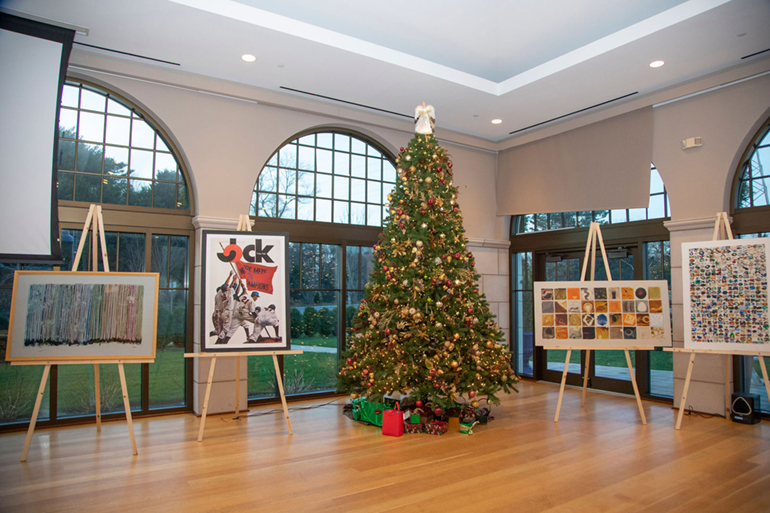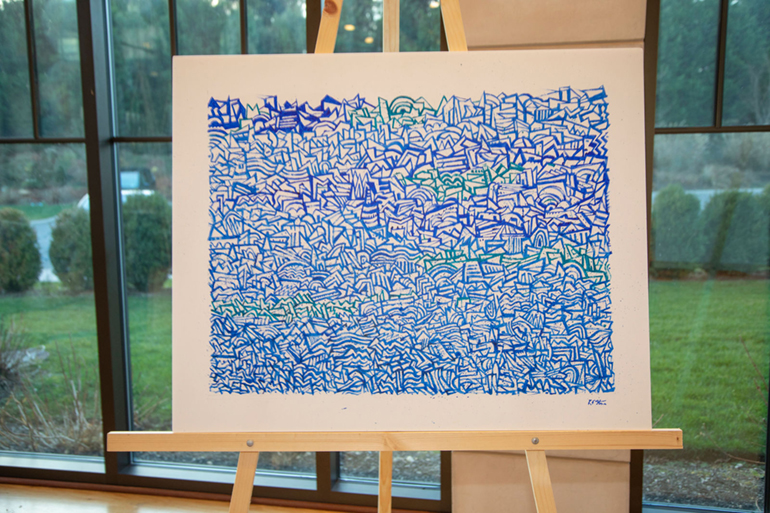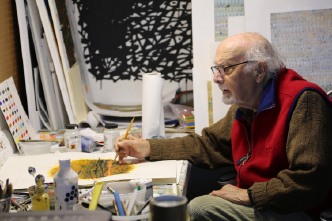Dick Stone’s Art Tells Many Stories in Southampton

To experience Dick Stone’s art at the Greek Orthodox Church of the Hamptons is to experience many stories. There’s the story of how, as a boy, Stone sold the Saturday Evening Post out of a canvas bag during the height of the Depression and became enamored with the work of Norman Rockwell. There’s the story of how Stone became the youngest student, at 12 years old, of the Art Students League of New York. There’s the story of Stone becoming an iconic commercial illustrator and later, filmmaker. And of course, there’s the story of the devastating Sag Harbor fire that destroyed much of Stone’s work and ended up inspiring him to paint even more.

Stone, at 95 years old, continues to paint with acrylics at his Hamptons home. His daughter, Julie Stone, picked 20 of his acrylic works to display at the Greek Orthodox Church of the Hamptons in a socially distanced gallery experience she hopes will show people her father’s remarkable skill with a paintbrush.
“I’ve been painting for what, 100 years?” Stone jokes. “Julie has been watching me work for years…. After the fire in 1994, most of my stuff that I’ve really liked I’ve done since then. I’ve not shown for a variety of reasons. This seemed to be a good idea. That’s really how it happened.”
For some, losing all their work in a fire would kill their resolve, but for Stone, it was inspiring. “The fire was one of the better things that happened creatively to me,” he says. “As much as it was traumatic when it happened, it helped conceptually.”
That resolve has been with Stone his entire life, Julie notes. “It wasn’t like he was born in an art family,” she says. “He was this prodigy from New Jersey who went to Yale, and he went right into illustration from the Art Students League. But it’s not as if he was sitting around an old Connecticut estate with generations of artists who knew what to do.”

Stone went on to become a Clio Award–winning illustrator and commercial producer and director. He shot commercials with the likes of Gerald Ford, Burt Lancaster, Joan Rivers, Reggie Jackson and Henry Fonda, who became one of Stone’s good friends. “It’s an interesting study in personalities when you get a celebrity,” Stone recalls. While Stone was not one to be starstruck, he learned quickly to adapt to the larger-than-life Hollywood personalities. When he shot Lancaster and called “action,” Lancaster stopped the shoot. “He scared me! He said, ‘Just a minute! Nobody says action to me!’ He was a really tough guy.” Conversely, Stone remembers Stewart driving himself to the studio and being affable. Stone describes Fonda as someone he became “fast friends” with, and they exchanged drawings with each other over the years.
Throughout his long, storied career, Stone kept painting. “I tried to keep my painter’s brain alive,” he says. “During that time, you have a lot of days where you’re not doing anything, so I’d paint. That was ideal for me because in the back of my mind I wanted to be a so-called fine artist, whatever the heck that is.”
Julie, also in advertising, still runs into people who know her father’s work and is constantly in awe of the things she learns and the stories she hears. But through all of the stories and all of the work, one thing has remained constant. “Art was first in his life and always was,” she says. “It’s always been built-in.”
See Dick Stone’s work at the Greek Orthodox Church of the Hamptons through January 7.



